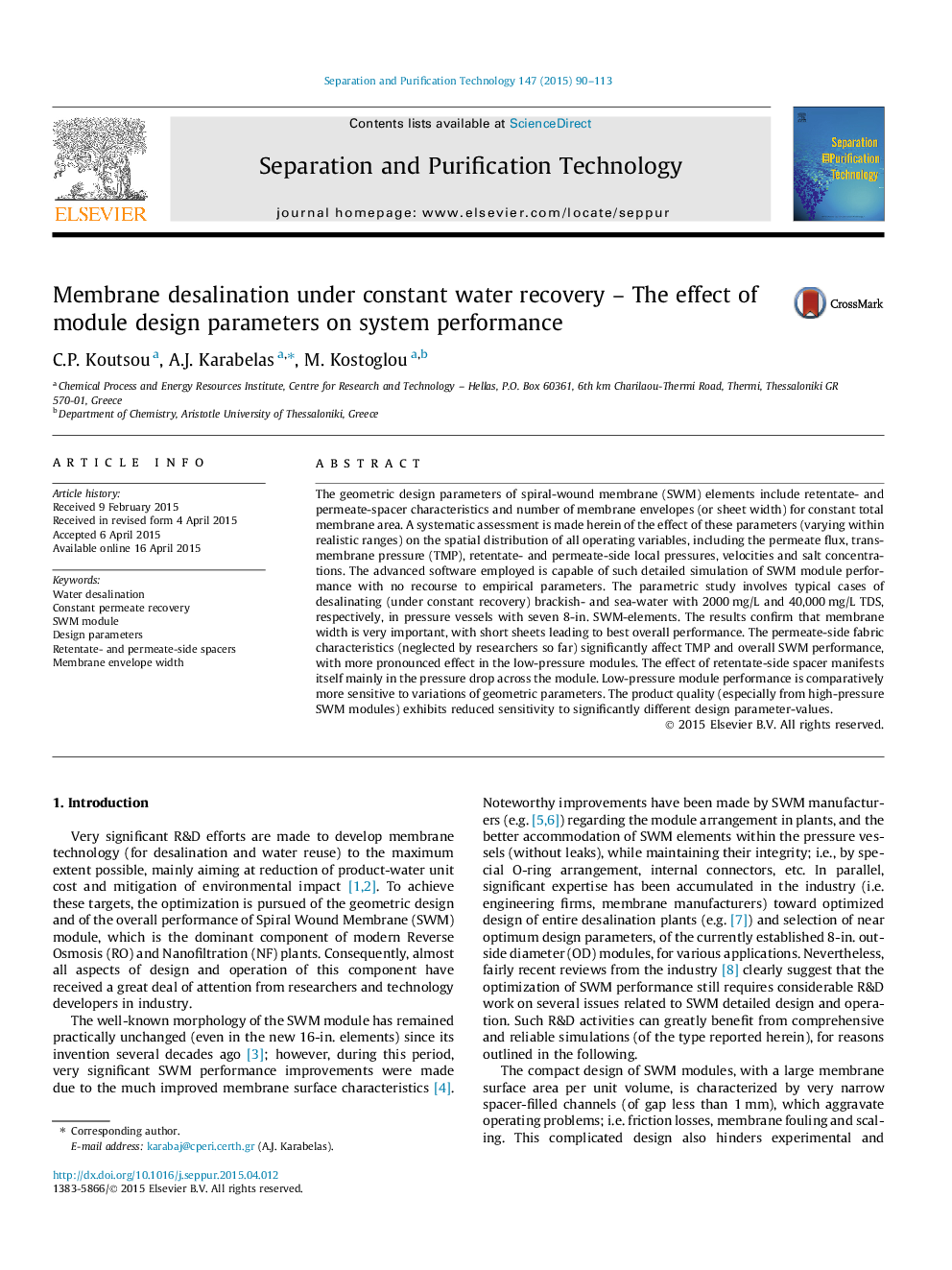| Article ID | Journal | Published Year | Pages | File Type |
|---|---|---|---|---|
| 640507 | Separation and Purification Technology | 2015 | 24 Pages |
Abstract
The geometric design parameters of spiral-wound membrane (SWM) elements include retentate- and permeate-spacer characteristics and number of membrane envelopes (or sheet width) for constant total membrane area. A systematic assessment is made herein of the effect of these parameters (varying within realistic ranges) on the spatial distribution of all operating variables, including the permeate flux, trans-membrane pressure (TMP), retentate- and permeate-side local pressures, velocities and salt concentrations. The advanced software employed is capable of such detailed simulation of SWM module performance with no recourse to empirical parameters. The parametric study involves typical cases of desalinating (under constant recovery) brackish- and sea-water with 2000Â mg/L and 40,000Â mg/L TDS, respectively, in pressure vessels with seven 8-in. SWM-elements. The results confirm that membrane width is very important, with short sheets leading to best overall performance. The permeate-side fabric characteristics (neglected by researchers so far) significantly affect TMP and overall SWM performance, with more pronounced effect in the low-pressure modules. The effect of retentate-side spacer manifests itself mainly in the pressure drop across the module. Low-pressure module performance is comparatively more sensitive to variations of geometric parameters. The product quality (especially from high-pressure SWM modules) exhibits reduced sensitivity to significantly different design parameter-values.
Keywords
Related Topics
Physical Sciences and Engineering
Chemical Engineering
Filtration and Separation
Authors
C.P. Koutsou, A.J. Karabelas, M. Kostoglou,
